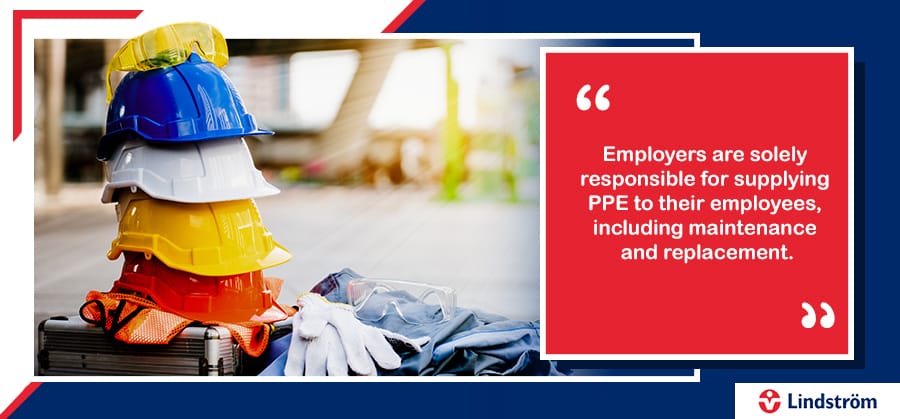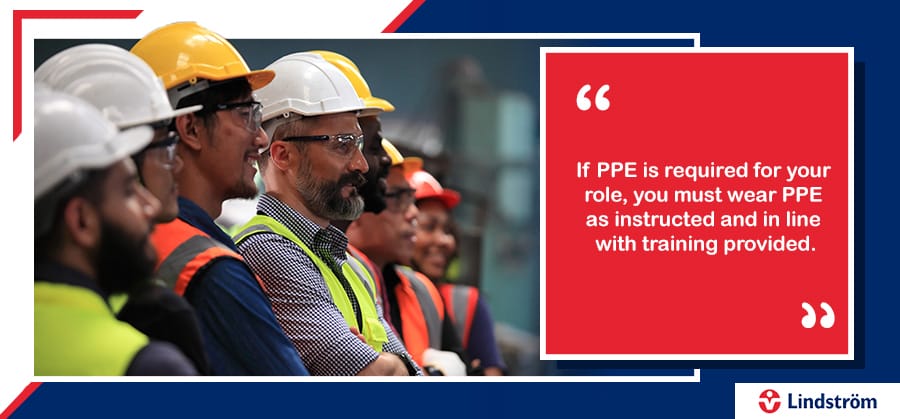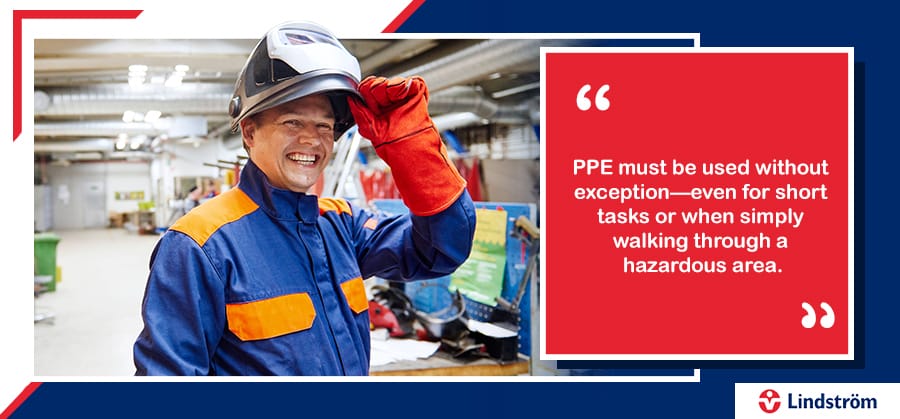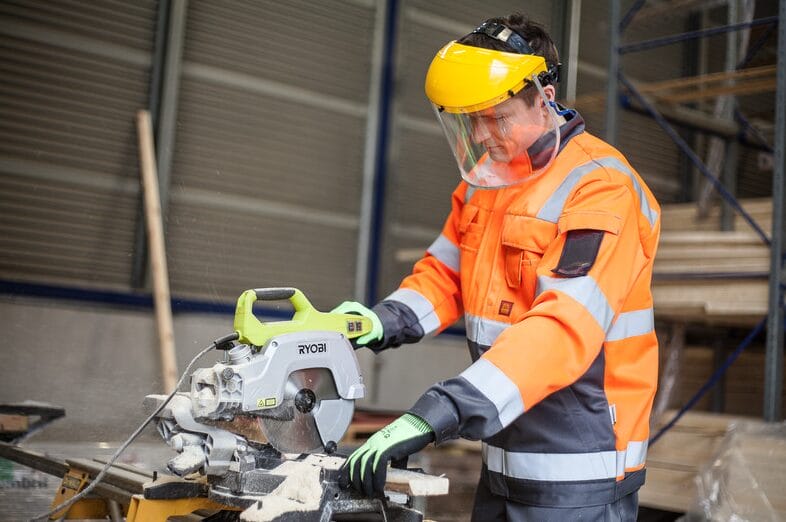
Employee PPE Responsibilities at Work
When it comes to workplace safety, employers have a clear responsibility to protect their workforce by supplying appropriate Personal Protective Equipment (PPE). But employees also have legal duties to ensure they use PPE correctly and consistently.
This guide explains employee responsibilities under UK PPE regulations, including recent changes introduced in the Personal Protective Equipment at Work (Amendment) Regulations 2022 (PPER 2022).
PPE Regulations in the UK: A Quick Overview
Under the PPE at Work Regulations 1992, employers must provide PPE free of charge when risks cannot be adequately controlled by other means.
These rules were updated by PPER 2022, which came into force on 6 April 2022, extending the responsibilities to include “limb (b) workers”—those who work under a contract for service, such as gig workers and some freelancers.
Employers remain responsible for supplying employees with PPE, as per the Health and Safety at Work Act 1974. But it’s not just about provision—employees must actively participate in ensuring PPE is used effectively and safely.

Who Is Responsible for Supplying PPE to Employees?
Employers are solely responsible for supplying PPE to their employees, including maintenance and replacement. Workers should never be asked to purchase their own equipment.
That said, employees have responsibilities too, particularly in how they wear, care for, and report on their PPE.

Employee Responsibilities for PPE at Work
If PPE is required for your role, you must:
- Wear PPE as instructed and in line with training provided.
- Ensure PPE fits correctly, is suitable for your size, shape, and job role.
- Check PPE for faults before use and report any issues to a line manager immediately.
- Use PPE only for its intended purpose and avoid unauthorised alterations.
- Store PPE properly after use—typically in a clean, dry place unless authorised to take it home.
- Avoid carrying out maintenance unless trained and authorised.
- Replace damaged PPE promptly, especially items like helmets or visors that have absorbed an impact.
These actions help reduce risks from hazardous substances, sharp tools, falling objects, extreme temperatures, and more.
What Duties Do Employees Have Under PPE Regulations?
According to UK law, employees must:
- Cooperate with their employer’s health and safety measures.
- Use PPE correctly and consistently.
- Follow instructions and attend training sessions.
- Report loss, damage, or defects.
Failing to meet these responsibilities may result in disciplinary action and potentially compromise workplace safety for everyone.
Understanding Limb (A) and Limb (B) Workers
The Employment Rights Act 1996 defines:
- Limb (a) workers: those with a contract of employment.
- Limb (b) workers: typically self-employed individuals working under a contract for services.
PPER 2022 now ensures both types of workers are covered under PPE regulations, significantly expanding workplace safety compliance.
Examples of PPE and Relevant Standards
PPE is designed to protect various parts of the body. Some examples include:
- Respiratory protection (e.g. respirators) – fit-tested and suitable for the contaminants.
- Head protection – helmets (BS EN 14052), bump caps.
- Eye protection – safety goggles (BS EN 166), visors.
- Hearing protection – earmuffs, earplugs (BS EN 352).
- Body protection – fireproof and high-visibility clothing (BS EN 471).
- Foot protection – steel-toe boots (BS EN ISO 20345).
Common Workplace Risks Requiring PPE
- Contaminated air: respirators and masks must be sealed properly to protect against fumes and viruses.
- Falling objects: helmets, safety boots, and hairnets are crucial in many manual jobs.
- Eye injuries: protective goggles should be used when handling corrosive liquids or working with particles.
- Chemical exposure: gloves, sleeve covers, and specialist clothing protect skin from burns and irritation.
- Loud environments: ear protection is essential in manufacturing and construction roles.

Why Is PPE the Last Line of Defence?
PPE should be considered a last resort when other safety measures (like ventilation or barriers) can’t eliminate the risk. But when required, PPE must be used without exception—even for short tasks or when simply walking through a hazardous area.
Ensuring Ongoing Compliance
Want to ensure you’re following PPE regulations correctly?
You can consult the UK Government’s Risk at Work PPE Toolbox, or if you’re partnered with Lindström, our workwear rental service ensures all garments are compliant with the latest standards.
Lindström UK supports a variety of industries with practical, compliant workwear solutions. This includes garments such as flame retardant workwear, anti-static and arc-protection apparel, and hi-vis workwear for roles where visibility is essential.
Our rental service ensures that all items are professionally laundered, maintained, and replaced when necessary, giving you peace of mind that your team is properly equipped and in line with regulations.
By ensuring your PPE approach is proactive and reliable, you not only meet legal obligations but also contribute to a safer, more efficient working environment.
Get PPE Compliance Right
Lindström offers industry-compliant PPE workwear rental and laundry solutions tailored to your needs. Our service ensures your PPE meets evolving UK regulations and is kept in top condition.
Contact us today to discuss your workwear needs and boost safety in your workplace.
Frequently Asked Questions (FAQs)
Who is responsible for supplying employees with PPE?
Employers are responsible for providing, maintaining, and replacing PPE free of charge. Employees should never be asked to fund or purchase their own PPE.
What responsibilities do employees have regarding PPE?
Employees must use PPE properly, ensure it fits, store it safely, and report faults or defects. They are also expected to cooperate with all health and safety procedures.
Can an employee refuse to wear PPE?
Not without valid reason. Refusing to wear required PPE may lead to disciplinary action and breaches health and safety regulations.
What happens if PPE is damaged or faulty?
It should be reported to a line manager immediately. Employers must then repair or replace the equipment promptly.
Are all workers covered by PPE regulations?
Yes. As of PPER 2022, both limb (a) employees and limb (b) workers (e.g., contractors, gig workers) are covered under PPE requirements.




